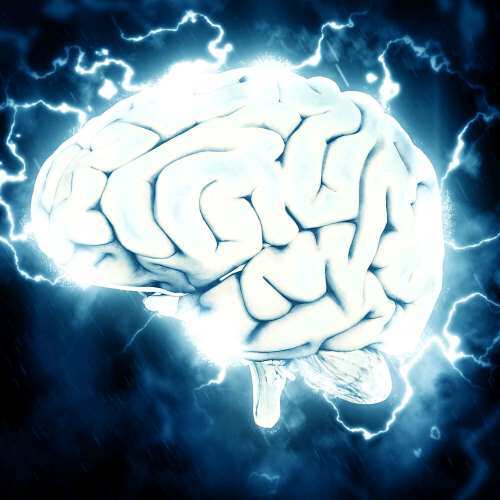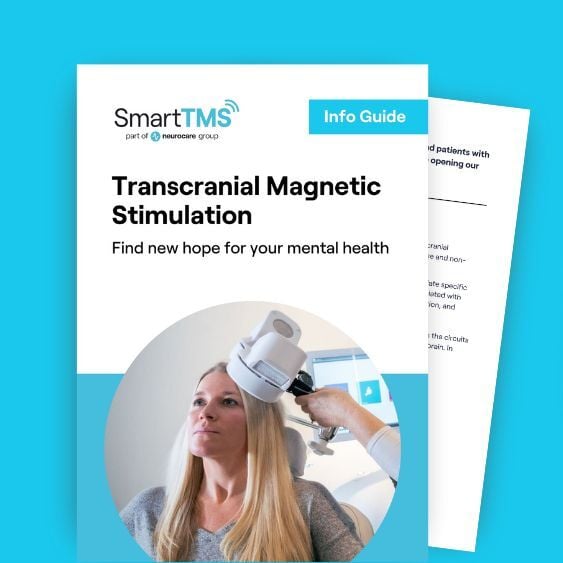Understanding the underlying mechanisms of TMS; Neuromodulation and Neuroplasticity
June 12, 2024 - Smart TMS

Neuromodulation
Neuromodulation consists of the process of altering nerve activity by delivering electrical or pharmaceutical agents directly to the target area. This technique is used to modify neuronal activity in specific parts of the brain and nervous system. It can be achieved through various methods such as electrical stimulation, magnetic stimulation and drug delivery systems.
Transcranial Magnetic Stimulation (TMS) is a form of neuromodulation that uses a coil to generate magnetic fields that induce electrical currents in specific areas of the brain. This current can depolarize neurons, changing the chemical levels inside and outside the cell, which causes action potentials and triggers neurons to fire. It is non-invasive and can target cortical and subcortical structures, influencing neuronal activity and network connectivity.
Neuroplasticity
Neuroplasticity refers to the brain’s ability to change and adapt throughout an individual’s life. It consists of the formation of new neuronal connections, adjusting existing ones and modifying its structure in response to the environment and sensory input. This can occur through regenerative changes, axonal sprouting, synaptic modifications and dendritic growth.
How TMS Induces Neuroplasticity
There are several ways TMS can induce neuroplasticity, including long-term potentiation (LTP) and long-term depression (LTD). LTP is the persistent strengthening of synapses, specifically when there is long lasting increase in communication between two neurons at a chemical synapse. This is important for memory and learning and happens after repetitive use of neuronal connections. Conversely, LTD refers to the reduction in strength of synapses, important for synaptic pruning and forgetting. This process happens when we are no longer in need of specific neuronal connections because they aren’t used repeatedly. Esser et al (2006) measured cortical responses to singular TMS pulses with EEG before and after TMS was applied to the motor cortex. They found that EEG responses at latencies of 15–55 ms were significantly potentiated, therefore demonstrating LTP.
Further, TMS can induce neuroplasticity through cortical excitability and inhibition. TMS can increase or decrease the excitability of specific cortical areas, leading to changes in the activity of neural circuits. When TMS is at high frequencies, it excites neurons and kicks them into action, starting a cascade of neurons firing, increasing the activity in that area. However, low frequency TMS inhibits neurons and decreases the activity in that region. Chen et al (1997) demonstrated that low frequency (<1Hz) rTMS for 15 minutes resulted in significant depression of motor evoked potential (MEP) amplitude for at least 15 minutes after the protocol, inducing neuronal inhibition. We can measure activity in the motor cortex with electroencephalography (EEG) by assessing electrical signals recorded from muscle tissue in response to stimulation of the motor cortex, called motor evoked potentials (MEP). In contrast, high frequency TMS (5Hz) delivered in short trains was found to facilitate motor cortical excitability for at least 30 minutes (Pacual-Leone et al 1994).
TMS can also influence the release of neurotransmitters and the sensitivity of receptors. Neurotransmitters are important chemical messengers between neurons that transmit signals to help regulate things like hormone levels, sleep and memory. Neurotransmitters are released to the post synaptic neuron, caused by depolarization of the cells which induce action potentials triggered by the electrical currents from the coil. This leads to modulation in synaptic strength and communication between neurons. Strafella et al. (2001) demonstrated that rTMS administered to the prefrontal cortex increased the release of dopamine in the caudate nucleus, evidenced by a decrease in radioligand [11C] raclopride binding, which competes with endogenous dopamine for receptor binding. Further, TMS activates receptors such as NDMA receptors, which play a crucial role in synaptic plasticity and can initiate intracellular signalling pathways and influence synaptic strength. Pogarell et al (2007) found that repeated rTMS over the prefrontal cortex enhanced D2 receptor binding potential in the striatum of patients with depression, which suggests the upregulation of dopamine receptor sensitivity.
Lastly, TMS can modulate the activity of brain networks, leading to reorganization and strengthening of connections within and between neural networks. Fox et al (2012) showed that TMS can modulate connectivity in brain networks, specifically the default mode network (DMN) and the central executive network (CEN). They observed changes in connectivity patterns with the use of functional magnetic resonance imaging (fMRI), which indicates network reorganization. Localized stimulation to specific regions repeatedly induces neuronal activation/ deactivation which can lead to long term changes in brain networks by strengthening connections. Keeser et al (2011) demonstrated a significant change of regional brain connectivity in areas close to the stimulation site, specifically the DMN and the frontal parietal networks (FPN). The fMRI revealed increased coactivations between different frontal brain regions close to or between both tDCS electrode stimulation sites.
Conclusion
Neuromodulation refers to methods that directly alter neuronal activity using stimuli like electrical currents or magnetic fields. TMS is a form of neuromodulation that uses magnetic fields to modulate brain activity and is used in treating various conditions such as depression and chronic pain. Neuroplasticity, on the other hand, is the brain’s inherent ability to reorganize itself by forming new connections. While neuromodulation techniques like TMS can influence neuroplasticity, neuroplasticity itself involves long-term changes in the brain’s structure and function, underlying learning, memory, and recovery from injury. TMS can induce neuroplasticity through several processes including LTP, LTD, cortical excitability and inhibition, neurotransmitter release, receptor sensitivity and network strengthening and reorganization.
Written by our Bristol Practitioner Carmen, MSc, BSc
References
- Chen, R.; Classen, J.; Gerloff, C.; Celnik, P.; Wassermann, E.M.; Hallett, M.; Cohen, L.G. (1997) Depression of Motor Cortex Excitability by Low-Frequency Transcranial Magnetic Stimulation. Neurology, 48, 1398–1403.
- Esser, S.K., Huber, R., Massimini, M., Peterson, M.J., Ferrarelli, F. and Tononi, G. (2006). A direct demonstration of cortical LTP in humans: A combined TMS/EEG study. Brain Research Bulletin, 69(1), pp.86–94. doi:https://doi.org/10.1016/j.brainresbull.2005.11.003.
- Fox, M.D., Halko, M.A., Eldaief, M.C. and Pascual-Leone, A. (2012). Measuring and manipulating brain connectivity with resting state functional connectivity magnetic resonance imaging (fcMRI) and transcranial magnetic stimulation (TMS). NeuroImage, 62(4), pp.2232–2243. doi:https://doi.org/10.1016/j.neuroimage.2012.03.035.
- Keeser, D., Meindl, T., Bor, J., Palm, U., Pogarell, O., Christoph Mulert, Brunelin, J., Hans-Jürgen Möller, Reiser, M.F. and Padberg, F. (2011). Prefrontal Transcranial Direct Current Stimulation Changes Connectivity of Resting-State Networks during fMRI. The Journal of Neuroscience, 31(43), pp.15284–15293. doi:https://doi.org/10.1523/jneurosci.0542-11.2011.
- Pascual-Leone A., Valls-Solé J., M. Wassermann E., Hallett M., (1994) Responses to rapid-rate transcranial magnetic stimulation of the human motor cortex, Brain, Volume 117, Issue 4, Pages 847–858, https://doi.org/10.1093/brain/117.4.847.
- Pogarell O, Koch W, Pöpperl G, Tatsch K, Jakob F, Zwanzger P, Mulert C, Rupprecht R, Möller HJ, Hegerl U, Padberg F. (2006) Striatal dopamine release after prefrontal repetitive transcranial magnetic stimulation in major depression: preliminary results of a dynamic [123I] IBZM SPECT study. J Psychiatr Res. Jun;40(4):307-14. doi: 10.1016/j.jpsychires.2005.09.001. Epub 2005 Nov 2. PMID: 16259998.
- Strafella, A.P., Paus, T., Barrett, J. and Dagher, A. (2001). Repetitive Transcranial Magnetic Stimulation of the Human Prefrontal Cortex Induces Dopamine Release in the Caudate Nucleus. The Journal of Neuroscience, 21(15), pp.RC157–RC157. doi:https://doi.org/10.1523/jneurosci.21-15-j0003.2001.










